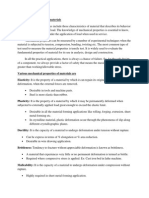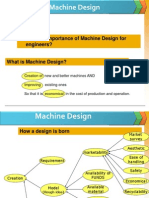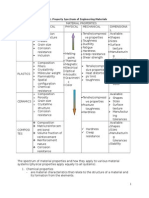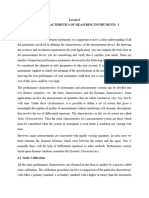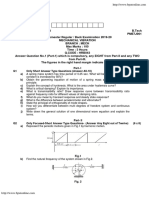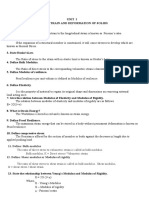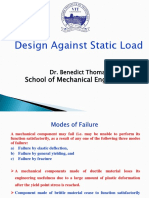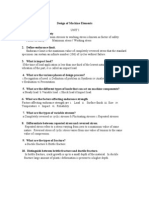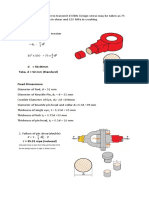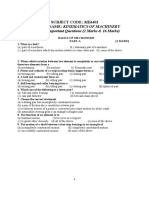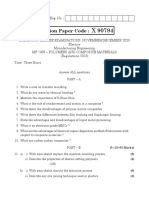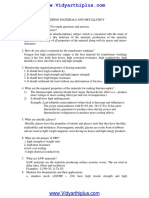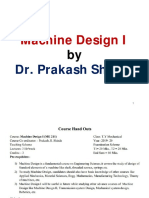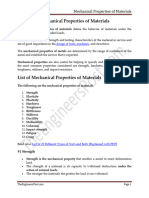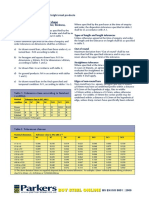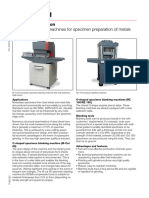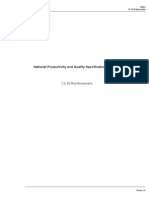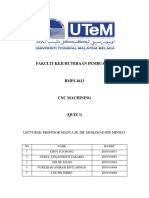MECHANICAL PROPERTIES OF MATERIALS
The mechanical properties of materials define the behavior of materials
under the action of external forces called loads.
There are a measure of strength and lasting characteristics of the material in
service and are of good importance in the design of tools, machines and
structures.
List of Mechanical Properties of Materials
1. Strength
2. Elasticity
3. Plasticity
4. Hardness
5. Toughness
6. Brittleness
7. Stiffness
8. Ductility
9. Malleability
10. Cohesion
11. Impact strength
12. Fatigue
13. Creep
STRENGTH
Strength is the mechanical property that enables a material to
resist deformation load.
The strength of a material is its capacity to withstand
destruction under the action of external loads.
The stronger the materials the greater the load it can
withstand.
�ELASTICITY
Elasticity is the ability of an object or material to resume its normal
shape after being stretched or compressed.
The elasticity of a material is its power of coming back to its original
position after deformation when the stress or load is released.
Heat-treated springs, rubber etc. are good examples of elastic
materials.
PLASTICITY
The plasticity of a material is the ability to undergo some permanent
deformation without rupture(brittle).
Plastic deformation will take place only after the elastic range has
been exceeded.
Pieces of evidence of plastic action in structural materials are called
yield, plastic flow and creep.
Materials such as clay, lead etc. are plastic at room temperature, and
steel plastic when at bright red-heat.
HARDNESS
The resistance of a material to force penetration or bending
is hardness.
Hardness is the ability of a material to resist scratching, abrasion,
cutting or penetration.
Hardness indicates the degree of hardness of a material that can be
imparted particularly steel by the process of hardening.
It determines the depth and distribution of hardness is introduce by
the quenching process.
TOUGHNESS
It is the property of a material which enables it to withstand shock or
impact.
Toughness is the opposite condition of brittleness.
The toughness is may be considering the combination of strength and
plasticity.
Manganese steel, wrought iron, mild steel etc. are examples of
toughness materials.
�BRITTLENESS
The brittleness of a property of a material which enables it to
withstand permanent deformation.
Cast iron, glass are examples of brittle materials.
They will break rather than bend under shock or impact.
Generally, the brittle metals have high compressive strength but low in
tensile strength.
STIFFNESS
The stiffness is the resistance of a material to elastic deformation or
deflection.
In stiffness, a material which suffers light deformation under load has
a high degree of stiffness.
DUCTILITY
The ductility is a property of a material which enables it to be drawn
out into a thin wire.
Mild steel, copper, aluminium are the good examples of a ductile
material.
MALLEABILITY
The malleability is a property of a material which permits it to be
hammered or rolled into sheets of other sizes and shapes.
Aluminium, copper, tin, lead etc. are examples of malleable metals.
COHESION
It is a mechanical property.
The cohesion is a property of a solid body by virtue of which they resist
from being broken into a fragment.
IMPACT STRENGTH
The impact strength is the ability of a material to resist suddenly
applied loads.
�FATIGUE
The fatigue is the long effect of repeated straining action which causes
the strain or break of the material.
Fatigue is the result of residual stress affecting an asset's composition,
including stresses from temperature, corrosion, load, and a variety of other
factors.
CREEP
The creep is a slow and progressive deformation of a material with
time at a constant force.
The simplest type of creep deformation is viscous flow.
Some metals are generally exhibiting creep at high temperature,
whereas plastic, rubber, and similar amorphous material are very
temperature sensitive to creep.
The force for a specified rate of strain at constant temperature is
called creep strength.
